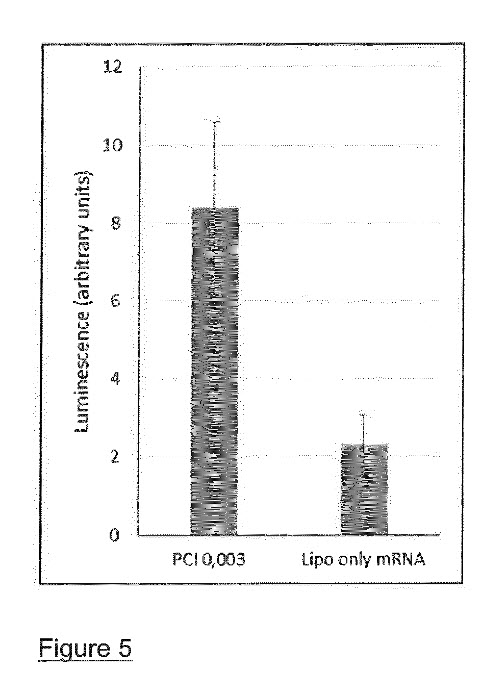Da har jeg studert PCIBs patent på mRNA og funnet noe mildt sagt oppsiktsvekkende.
Vi har jo i det siste diskutert AstraZeneca, BioNTech og Moderna. Disse er alle store på mRNA. Det store spørsmålet er, hva bruker disse idag som leveringsmekanisme for mRNA?
Den store fellesnevneren synes å være lipid nanoparticles. Prinsippet i lipid nanoparticles ble illustrert fint her:
Disse “fettklumpene” fester seg til cellene og benytter seg også av endocytose for å komme inn i cellen, men som nevnt i PCIBs prospekt, kan likevel mRNA bli fanget i endosomer inne i cellen:
"Many companies are developing so-called lipid nanoparticles (LNPs) that
have significantly improved the delivery of larger nucleic acids such as mRNA. This represent serious competition to the fimaNAC technology, but even the best of these LNPs are still rather inefficient in endosomal escape, leaving a clear potential for further improvement by fimaNAC. "
At dette er ganske ineffektivt er vist også i denne artikkelen (Merk spesielt min utheving, den siste setningen. Merk også at artikkelen er skrevet av flere forfatter som jobber for AZ):
Lipid nanoparticles (LNPs), currently represent the most advanced platform for RNA delivery6,7,8,9,10,11,12,13, which have now advanced into human clinical trials7,14,15,16, and their mRNA delivery safety profiles have been evaluated in human and non-human primates17,18. LNP-mediated mRNA delivery has been tested in preclinical studies of Fabry disease (X-linked lysosomal storage disease) in non-human primates19 and disease models of Friedreich’s ataxia and methylmalonic acidaemia20,21, metabolic and behavioral abnormalities in a murine model of citrin deficiency22, preclinical and clinical trials of immunogenicity for protection against Zika and influenza viruses23,24. However, their limited capacity to undergo endosomal escape limits the use of LNPs as RNA delivery vehicles, as only a small fraction of RNA efficiently escapes endosomes to reach the cytoplasm of cells4. Despite the fact that, a major proportion of LNPs (95%) is endocytosed (taken up) by cells within half hour6, it is estimated that <2% of the siRNA administered via LNPs escapes the endosomes to reach the cytosol6,12. Thereafter, the fate of endocytosed LNPs for example, how and why endosomal escape of LNP-delivered RNA is only in small amounts to reach the cytoplasm, is not completely understood.
Tilbake patentet.
" However, the widespread use of mRNA for these purposes has so far been severely hindered by problems with delivering the functional mRNA into cells.
Carriers have been used to attempt to overcome this issue. Among synthetic carriers, the most common way to deliver mRNA molecules has been by the use of cationic lipids"
Og:
“The most successfully employed lipid vehicle for mRNA delivery is lipofectamine”
Nå begynner det å bli interessant.
Lipofectamine er et Thermo-Fischer produkt som har vært på markedet lenge:
Det kan se ut som om produktet er flittig benyttet av bl.a Moderna og BioNTech.
Noen eksempler:
Moderna-studie:
https://www.ncbi.nlm.nih.gov/pmc/articles/PMC6157376/
BioNTech-patent:
http://www.freepatentsonline.com/y2015/0314018.html
AZ benytter muligvis også dette produktet men har nok også egenformulerte lipid nanoparticles, eks i denne publikasjonen:
https://www.nature.com/articles/s41467-019-12275-6
Så til det oppsiktsvekkende! Fra patentet (min utheving):
“The present invention provides a method of delivering mRNA in vivo which does not rely on carriers but instead uses a photochemical internalisation method allowing controlled
and timed release of the mRNA to the site of interest. It has been found that the method provides superior in vivo delivery of mRNA to target cells relative to the use of lipofectamine as the gold standard for mRNA delivery. This provides a method suitable for various therapeutic applications.”
Litt lengre ned:
"Results
It can be seen from Figure 5 that for intradermal mRNA delivery PCI with 0.003 pg TPCS2a improved mRNA translation almost 4 times over what was achieved with lipofectamine."
Og figuren:

Ikke noen fancy graf med farger, men du verden for noen data! fimaNac leverer altså mRNA 4x bedre enn dagens gullstandard! Selvsagt med den haken at det er In Vivo-data, men klart at her har PCIB en fantastisk lovende teknologi, så det er vel kun spørsmål om tid før noen lisensierer inn dette.





